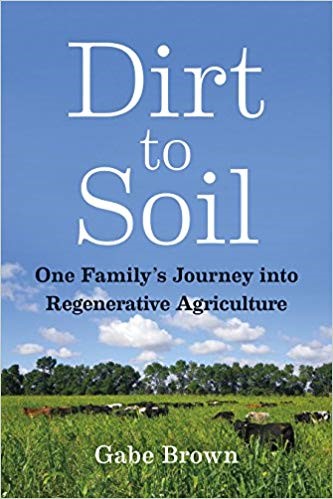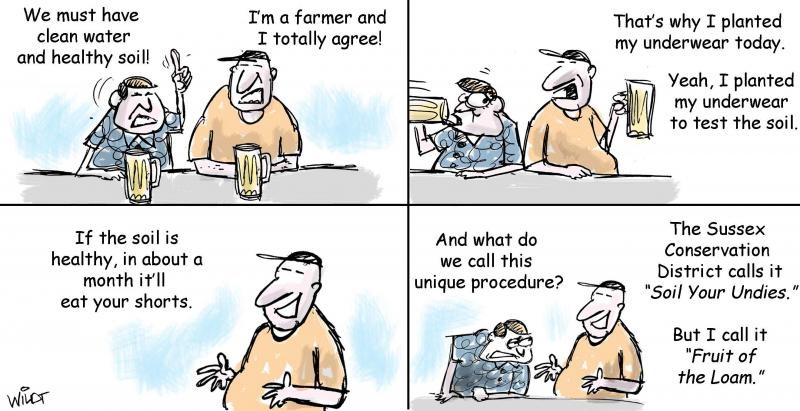NEW TOOLS FOR PROMOTING SOIL HEALTH
The Soil Health Institute is a non-profit organization that utilizes the input and collaboration of partnering organizations, including NACD, to further their goal of supporting soil stewardship and advancing soil health.
NACD North Central Region Representative Beth Mason serves as co-chair of the SHI Communications and Education Action Team, a group of professionals from various organizations, agencies, institutions and related industry. The team has spent time over the past year developing two tools for SHI that will assist in the promotion of soil health: An online catalog of soil health educational resources and a soil health events calendar.
The online catalog of soil health educational resources guides users to different materials and information on soil health to assist in educating children as well as adults. While this catalog is extensive, you may go online and submit additional resources for possible inclusion in the catalog.
The Soil Health Events Calendar is another useful tool that helps promote soil health events around the country. Additionally, you can search the calendar for the next soil health event in your area. Anyone with an upcoming soil health event open to the public is encouraged to submit the details online to add to the calendar. Events can range from local field tours to state, regional and national conferences.
DIRT TO SOIL: ONE FAMILY'S JOURNEY INTO REGENERATIVE AGRICULTURE
 Gabe Brown, a North Dakota landowner and operator, is a strong advocate for soil health. As a guest speaker at many events, Brown has shared his experiences and journey in regenerative agriculture. Now, he's written that story down in a book due to come out Oct. 4 named Dirt to Soil. Gabe Brown, a North Dakota landowner and operator, is a strong advocate for soil health. As a guest speaker at many events, Brown has shared his experiences and journey in regenerative agriculture. Now, he's written that story down in a book due to come out Oct. 4 named Dirt to Soil.
"Brown didn’t set out to change the world when he first started working alongside his father-in-law on the family farm in North Dakota. But as a series of weather-related crop disasters put Brown and his wife, Shelly, in desperate financial straits, they started making bold changes to their farm. Brown―in an effort to simply survive―began experimenting with new practices he’d learned about from reading and talking with innovative researchers and ranchers. As he and his family struggled to keep the farm viable, they found themselves on an amazing journey into a new type of farming: regenerative agriculture.
Brown dropped the use of most of the herbicides, insecticides and synthetic fertilizers that are a standard part of conventional agriculture. He switched to no-till planting, started planting diverse cover crops mixes, and changed his grazing practices. In so doing, Brown transformed a degraded farm ecosystem into one full of life―starting with the soil and working his way up, one plant and one animal at a time.
In Dirt to Soil, Brown tells the story of that amazing journey and offers a wealth of innovative solutions to our most pressing and complex contemporary agricultural challenge―restoring the soil. The Brown’s ranch model, developed over twenty years of experimentation and refinement, focuses on regenerating resources by continuously enhancing the living biology in the soil. Using regenerative agricultural principles, Brown’s ranch has grown several inches of new topsoil in only twenty years!
The key is how we think, Brown says. In the industrial agricultural model, all thoughts are focused on killing things. But that mindset was also killing diversity, soil and profit, Brown realized. Now he channels his creative thinking toward how he can get more life on the land―more plants, animals and beneficial insects. “The greatest roadblock to solving a problem,” Brown says, “is the human mind.”"
THE MIDWEST COVER CROP COUNCIL
The Midwest Cover Crop Council's mission is to significantly increase the amount of continuous living cover on the Upper Midwestern agricultural landscape. To that end, the council provides valuable information, tools and resources to assist landowners in establishing this soil health practice on their land as well as educate the public.
The Midwest Cover Crop Council website hosts resources to landowners/operators, but there is also an app based on the Midwest Cover Crop Field Guide which can help a landowner effectively select, grow, and use cover crops in their farming system. To find this free app on your phone or mobile device, search your app store for “Cover Crop,” an app that was created out of Purdue University.
While this council operates with the focus on the Upper Midwest, other regions are looking to establish similar cover crop councils to bring the focus and support needed for cover crops in their area of the country. Landowners face different challenges based on their region, so the demand for region-specific support is great. Please keep us posted if you know of a cover crop council in your region that is getting established. They would be a great resource to share within our network.
SOIL YOUR UNDIES GOES NATIONAL WITH SUSSEX CONSERVATION DISTRICT
Most successful soil health outreach events contain some visual demonstration of the properties of good soil versus bad soil. One that has been around for a few years has been the “Soil Your Undies” demonstration, where early in the season, a pair of men’s white cotton briefs are buried in various fields which have each been managed differently. At a later date, the briefs are uncovered and displayed – showcasing the varying levels of disintegration. The amount of this disintegration all depends on the amount of soil biology of the field in which it was buried. Through this visual, the presenter is able to explain what kind of practices have created the environment in which the soil is teeming with such activity as to eat through the briefs. This demonstration also has the potential to bring out the giggling child in each of us as we learn some critical soil health lessons.
This summer, the Sussex Conservation District (SCD) in Delaware received national publicity for their recent demonstration, which has opened the door for further demonstrations and the spread of additional information on soil health. The Associated Press picked up on this campaign, which started on a field day in July, and as a result, the story was picked up across the U.S. in other national publications.
A local news station from Philadelphia traveled to Delaware to interview the staff and farmers involved in this campaign. In this clip, NACD Soil Health Champion Jay Baxter is interviewed by a newscaster from Fox 29 in Philadelphia as he leads him through the demonstration. On Aug. 14, SCD will host another field day, where they will uncover the briefs and share the results. Because of the media attention they received at the beginning of this season’s campaign, they expect additional publicity and attendees.
Be sure to take this example of media coverage for soil health as a bit of encouragement for your efforts. It is important to continue these demonstrations and outreach events, even if you’ve been doing these for years. One day it may connect with someone and make all the difference – whether on a personal scale or a national media scale.

|
|
|
|
|
Email Marketing By
|


|
|
|
|
|